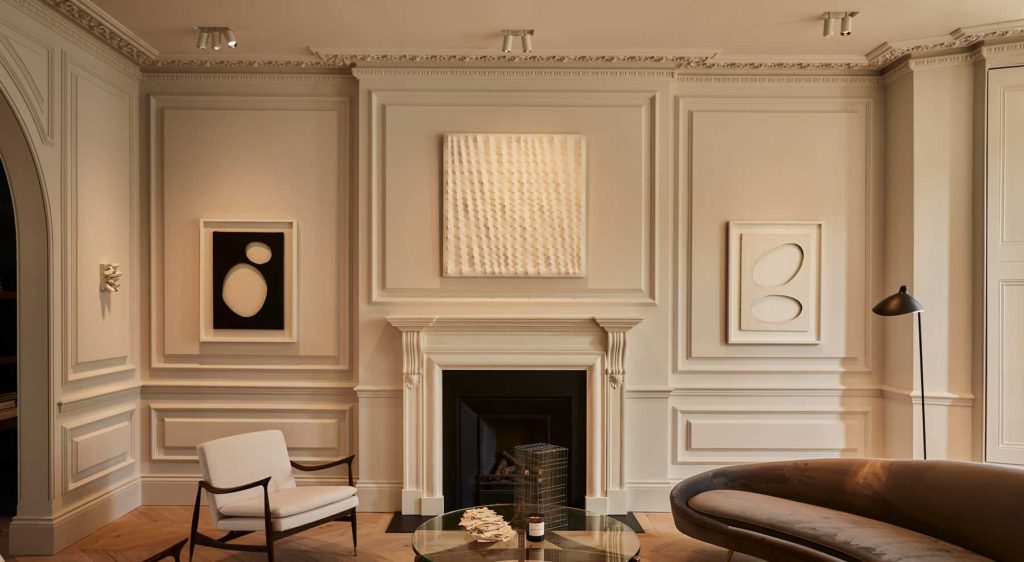process: The process I find most successful consists of the following stages.
We have an initial briefing meeting, preferably on site, to discuss your taste and how you see your house, flat or room working. We discuss the space with architectural plans in hand along with any other available information such as joinery details, furniture layouts and overall style. The more information you can bring to this meeting the better your lighting design will suit the style of your home.
With this information I work on a lighting concept, marking up a lighting plan to show the exact positioning of fittings and circuits.
Then we have another meeting where I present my ideas to you, using plans, photos and working samples of lights to demonstrate show you the light quality and the effects I am hoping to achieve.
Once we have agreed on the lighting layout, I’ll produce a full specification of architectural light fittings, including detailed notes on circuits, load types, and controls. I put together a package for the electrician including product sheets, a circuit schedule and detailed installation notes and lighting plans either drawn up by hand or on AutoCAD.
Inevitably revisions will be needed, as changes tend to occur during a project due to furniture or layout changes, architectural obstacles or simply a change of mind. Amendments do involve a certain amount of re-drawing, re-specification and general co-ordination. You may want to set aside a moderate contingency fund with this in mind. Throughout the project, I’ll be keeping an eye on progress, attention to detail, budget and time. I will also liaise with contractors, AV consultants and garden designers.
At the end of the project, when art works, fabrics and furniture are in position, if required, I’ll make a visit to focus lights, and to finalise the programming of the controls, setting scenes with the electrician or AV consultant.
personal: Lighting is a very personal thing. I’d prefer to spend time with you discussing your preferences and tastes, rather than viewing an interior and prescribing a lighting scheme. You’re the person living there and it has to be right. A client-centred approach is the way to achieve this.
Of course I’ll suggest effects and new developments in equipment and fittings but this will always be filtered through my understanding of the personality you want to give your place or room.
my approach: I see lighting as an integral part of architecture and interior design. It’s a very powerful tool, both functionally and decoratively. Frequently undervalued, lighting is often treated as an afterthought at the end of a project, almost always to the detriment of an interior.
atmosphere and mood vs tech-spec: The combination of new lighting technology and legal regulations can often bewilder the layman. Rest assured, I will always talk you through this in plain English, minus jargon. Having said that, I think it’s important to stress that I never forget the aesthetics of a project.
My arts background (I have a degree in the History of Art) and interior design training mean that I’m able to bridge the gap between the electrician’s technical knowledge and the spatial, functional and emotional benefits you want in your home.
